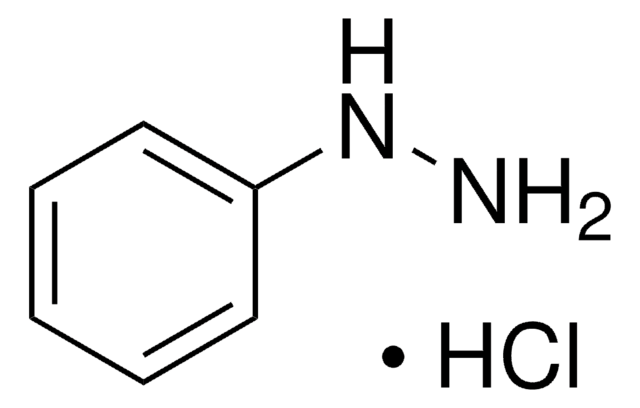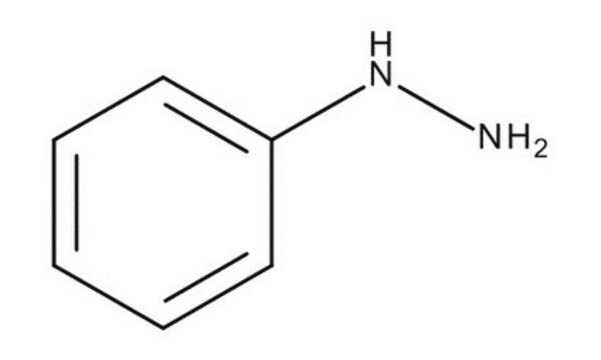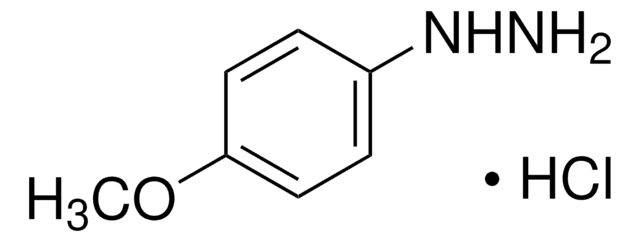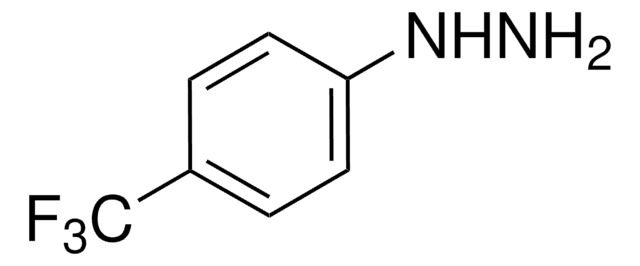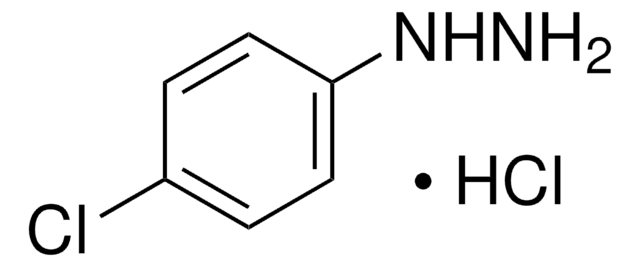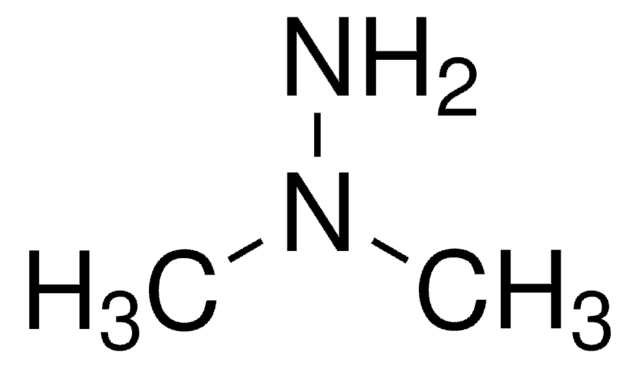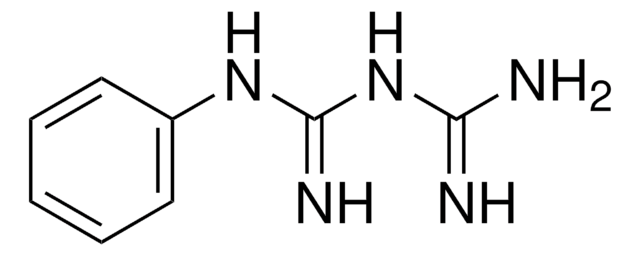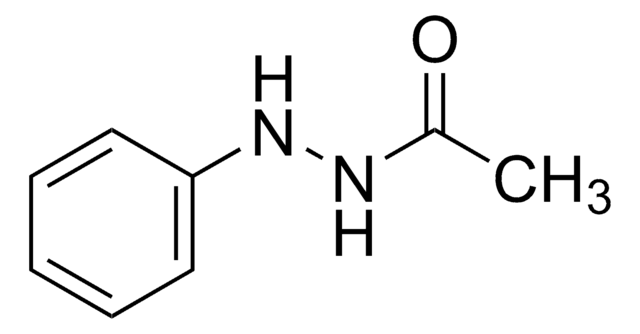Wichtige Dokumente
P26252
Phenylhydrazin
97%
Synonym(e):
Hydrazinobenzene, Monophenylhydrazine
About This Item
Empfohlene Produkte
Dampfdichte
4.3 (vs air)
Qualitätsniveau
Dampfdruck
<0.1 mmHg ( 20 °C)
Assay
97%
Selbstzündungstemp.
345 °F
Brechungsindex
n20/D 1.607 (lit.)
bp
238-241 °C (lit.)
mp (Schmelzpunkt)
18-21 °C (lit.)
Dichte
1.098 g/mL at 25 °C (lit.)
SMILES String
NNc1ccccc1
InChI
1S/C6H8N2/c7-8-6-4-2-1-3-5-6/h1-5,8H,7H2
InChIKey
HKOOXMFOFWEVGF-UHFFFAOYSA-N
Suchen Sie nach ähnlichen Produkten? Aufrufen Leitfaden zum Produktvergleich
Anwendung
- 4, 4′-(arylmethylene)-bis(3-methyl-1-phenyl-1H-pyrazol-5-ol)s by reacting with aryl aldehydes and acetoacetates in presence of N-bromo sulfonamide as a catalyst via one-pot pseudo-five-component condensation.
- Thiazolidinones by treating with mercaptoacetic acid and aldehydes or ketones.
- 5-[3,3,3-trifluoro-2-(phenylhydrazono)propyl]-1-phenyl-1H-pyrazole-3-carboxylic acid by reacting with 6-(trifluoromethyl)comanic acid.
It can be also used as a precursor for the preparation of selective carboxymethylated products at N-1 and N-2 by reacting with dimethyl carbonate (DMC) in the presence of a Bronsted base and metal salts as a catalyst.
Signalwort
Danger
Gefahreneinstufungen
Acute Tox. 3 Dermal - Acute Tox. 3 Inhalation - Acute Tox. 3 Oral - Aquatic Acute 1 - Carc. 1B - Eye Irrit. 2 - Muta. 2 - Skin Irrit. 2 - Skin Sens. 1 - STOT RE 1
Lagerklassenschlüssel
6.1A - Combustible, acute toxic Cat. 1 and 2 / very toxic hazardous materials
WGK
WGK 3
Flammpunkt (°F)
192.2 °F - closed cup
Flammpunkt (°C)
89 °C - closed cup
Persönliche Schutzausrüstung
Eyeshields, Faceshields, Gloves, type ABEK (EN14387) respirator filter
Zulassungslistungen
Zulassungslistungen werden hauptsächlich für chemische Produkte erstellt. Für nicht-chemische Produkte können hier nur begrenzte Angaben gemacht werden. Kein Eintrag bedeutet, dass keine der Komponenten gelistet ist. Es liegt in der Verantwortung des Benutzers, die sichere und legale Verwendung des Produkts zu gewährleisten.
EU REACH Annex XVII (Restriction List)
Hier finden Sie alle aktuellen Versionen:
Besitzen Sie dieses Produkt bereits?
In der Dokumentenbibliothek finden Sie die Dokumentation zu den Produkten, die Sie kürzlich erworben haben.
Kunden haben sich ebenfalls angesehen
Artikel
Structural modifications of proteins are essential to living cells. When aberrantly regulated they are often the basis of disease. Glycans are responsible for much of the structural variation in biologic systems, and their representation on cell surfaces is commonly called the “glycome.”
Unser Team von Wissenschaftlern verfügt über Erfahrung in allen Forschungsbereichen einschließlich Life Science, Materialwissenschaften, chemischer Synthese, Chromatographie, Analytik und vielen mehr..
Setzen Sie sich mit dem technischen Dienst in Verbindung.